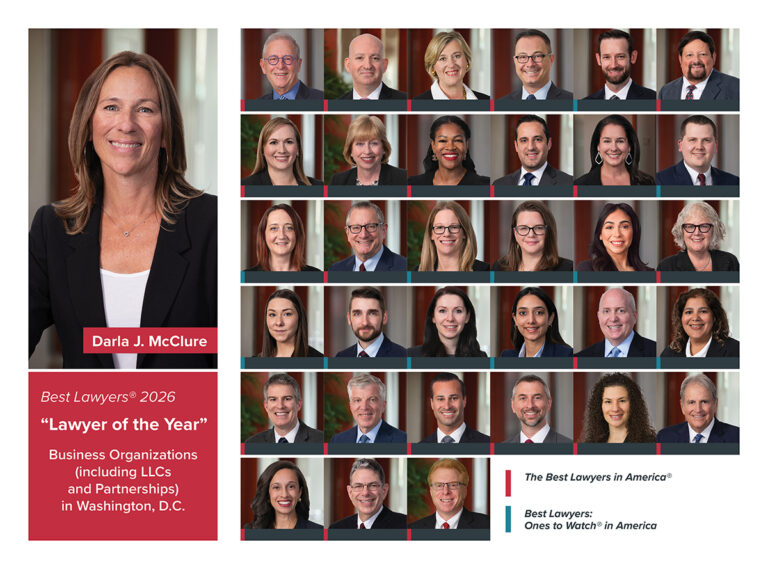July 9th, 2025
Highlights of the Tax Provisions of OBBB Act
Posted in: Tax Law Tagged: David S. De Jong

On July 4, 2025, President Trump signed into law the One Big Beautiful Bill Act (OBBB), marking one of the most significant tax reforms in recent years. The sweeping changes to the federal tax code will impact individuals, businesses and estate planning strategies.
Provisions Affecting Individuals
- The $5,250 exclusion on employer paid student debt is made indefinite and is indexed effective 2027 and the exclusion from income on student loans discharged on account of death or disability is also made indefinite.
- A seller of farmland to a qualified farmer may report gain one-fourth in the year of sale and one-fourth in the three succeeding years with the election made at the individual level in the case of flow-through entities and the obligation becoming due on death or certain liquidations, effective tax years beginning after July 4, 2025.
- The ordinary loss limitation for individuals of $250,000/$500,000 joint is made indefinite.
- An additional “above the line” deduction is created for 2025-2028 of $6,000 per person for those at least age 65 (except married filing separately) phased out by 6 percent of modified adjusted income in excess of $75,000 or $150,000 on a joint return.
- An “above the line” deduction of up to $25,000 for employees and independent contractors is created from 2025-2028 for “voluntary” tip income in occupations traditionally receiving gratuities as determined by regulation (necessarily excluding “specified service” businesses as defined under QBID); the deduction cannot be used to create a loss from the activity and will be phased out by $100 for each $1,000 of modified adjusted gross income in excess of $150,000 (double on a joint return but not applicable if married filing separately).
- An “above the line” deduction applies from 2025-2028 for overtime pay (except tips) for hourly wage earners up to $12,500 (double on a joint return) reduced by $100 for each $1,000 of modified adjusted gross income in excess of $150,000 (double on a joint return and not applicable if married filing separately).
- An “above the line” deduction applies from 2025-2028 for interest (including lease financing) up to $10,000 annually on passenger vehicles weighing less than 14,000 pounds (including pickup trucks and motorcycles) with final assembly in the United States and not used for business with the deduction reduced by $200 for each $1,000 by which modified adjusted gross income exceeds $100,000 ($200,000 on joint returns).
- Moving expenses will continue not to be allowed as a deduction or exclusion but the exception for military will be extended to the intelligence community effective 2026.
- The partial deduction of cash charitable contributions for nonitemizers is reinstated in 2026 and beyond to $1,000 ($2,000 on a joint return); for itemizers, the ability to deduct most contributions up to 60 percent of adjusted gross income is made indefinite but a ½ percent floor based on modified AGI will apply effective 2026.
- The itemized deduction for state and local taxes is increased to $40,000 in 2025 rising by 1 percent per year but returning to $10,000 in 2030; through 2029, the deduction is reduced but not below $10,000 by 30 percent of excess modified adjusted income over $500,000 rising by 1 percent per year (one-half of this amount for married filing separately).
- The current rules on qualified residence interest including the $750,000 debt limitation, the ineligibility of home equity loans for the deduction and the writeoff for certain mortgage insurance premiums as interest are made indefinite.
- The current rules restricting the deduction of personal casualty/theft losses are made indefinite; however, the exception for disasters declared by the President is extended to disasters declared by a state’s Governor effective 2026.
- Gambling expenses will continue to be treated as losses from wagering transactions but only 90 percent of losses can be used to offset winnings effective 2026.
- The elimination of miscellaneous itemized deductions will continue indefinitely.
- A new limitation on itemized deductions for those in the 37 percent marginal bracket effective 2026 will require a reduction by the lesser of 2/37 of tentative itemized deductions after all other limitations are applied or 2/37 of the income that would be taxed in the 37 percent bracket.
- The current standard deduction for 2025 is set at $15,750 for singles, $23,625 for heads of household and $31,500 for married filing jointly as indexed beginning in 2026.
- The personal exemption is abolished on an indefinite basis.
- Current income tax rates as indexed will be extended indefinitely.
- The current alternative minimum tax exemption rules are made indefinite but the phaseout rate of the exemption effective 2026 is increased from 25 percent to 50 percent of the excess over the threshold.
- The child tax credit is increased to $2,200 for 2025, extended indefinitely and indexed in its entirety after 2025 (parents and child must generally be US citizens).
- The dependent care credit is enhanced effective 2026 by increasing the maximum applicable percentage of qualifying expenses from 35 percent to 50 percent and slowing the reduction such that it does not drop below 35 percent until $75,000 of adjusted gross income (double if married filing jointly).
- The adoption credit is made refundable up to $5,000 effective 2025 and all numbers will be subject to COLA indexing.
- A new credit effective 2027 will be created for donations to qualifying scholarship programs of private elementary and secondary schools up to $1,700 annually.
- The residential clean energy credit and the energy-efficient home improvement credit are repealed after 2025 and the new energy-efficient home credit is repealed as of July 4, 2026.
- The credit for electric vehicles will terminate after September 30, 2025.
- Immigrants without legal status in the United States will be denied the refundable credit for coverage under a qualified health plan effective 2027.
Provisions Affecting Retirement and Estate Planning
- Section 529 plans may cover post-secondary credentialing programs effective after July 4, 2025; the ability to move funds from a Section 529 plan into an ABLE account is made indefinite.
- Other ABLE account rules are made indefinite including eligibility for contributions for the Savers Credit; the $2,000 base increases to $2,100 effective 2027.
- “Trump Accounts” with similarities to Traditional IRAs can be created with after-tax dollars effective July 4, 2026 through financial institutions with limited choice of investments permitted up to a $5,000 maximum (indexed after 2027) for any year before the beneficiary will turn 18 with no distributions permitted until subsequent years and limited until age 30 with qualified taxable distributions enjoying capital gain treatment; employers can contribute up to $2,500 per year (also indexed after 2027) if pursuant to a nondiscriminatory plan and the Government will contribute $1,000 for US citizens born in 2025-2028 through a credit to the parent’s tax return deposited in an account.
- The applicable estate and gift tax exemption is increased to $15 million in 2026 and indexed thereafter.
Provisions Affecting Businesses
- Qualified Opportunity Zones will continue indefinitely with modified provisions.
- Completed contract accounting for long-term contracts is extended to construction of apartments and residential condominiums for contracts entered into after July 4, 2025.
- The 30 percent limitation in deducting business interest will again be applied against EBIDTA from 2025-2029.
- Research and experimental costs can be deducted rather than amortized effective 2025 tax years; small business taxpayers with up to $31 million in revenue can apply this provision retroactively to 2022 and larger companies can accelerate their prior costs over up to two years.
- 100 percent bonus depreciation returns for most capital expenditures acquired after January 19, 2025 and before 2030.
- The maximum expensing under Section 179 of eligible capital assets will be increased to $2.5 million for 2025 tax years with a phaseout commencing at $4 million of purchases with both numbers indexed for COLA thereafter.
- Employee elective deferrals for dependent care in a cafeteria plan are increased from $5,000 to $7,500 effective 2026.
- Health Savings Accounts have expanded eligibility effective 2026.
- Bicycle travel will no longer be a “qualified transportation fringe” after 2025.
- The reduction in the deduction for foreign-derived and global intangible low-taxed income (GILTI) will be cut and the deduction after 2025 will be 33.34 and 40 percent respectively.
- The Small Business Stock rules are modified for stock issued after July 4, 2025 to give a 50 percent exclusion after three years and a 75 percent exclusion after four years, to allow a small business corporation to have up to $75 million in assets and to increase the exclusion to the greater of ten times the basis of the original investment or $15 million.
- Charitable donations by C corporations up to 1 percent of taxable income will be nondeductible effective 2026 tax years.
- The QBID is made indefinite but effective 2026 the phaseout range is increased to $75,000 ($150,000 for married mailing jointly); a minimum deduction of $400 indexed would apply to those with at least $1,000 indexed of qualified business income from material participation.
- The employer-provided child care credit will be increased effective 2026 from 25 percent to 40 percent of qualified expenditures and the annual maximum would rise from $150,000 to $500,000 ($600,000 for eligible small businesses) with all numbers subject to a COLA increase.
- The employer credit for paid family and medical leave is made indefinite and enhanced effective 2026 tax years.
- Employee Retention Credit claims will be disallowed if filed after January 31, 2024 and civil penalties for aiding and abetting in preparation of a false return are increased; a special statute of limitations allows IRS to adjust for six years.
- The excise tax on investment income of private colleges and universities will increase effective 2026 – to 8 percent where the endowment exceeds $2 million per student.
Provision Affecting Procedure
- The threshold for most reporting through 1099s will be increased from $600 to $2,000 indexed for payments made after 2025.






